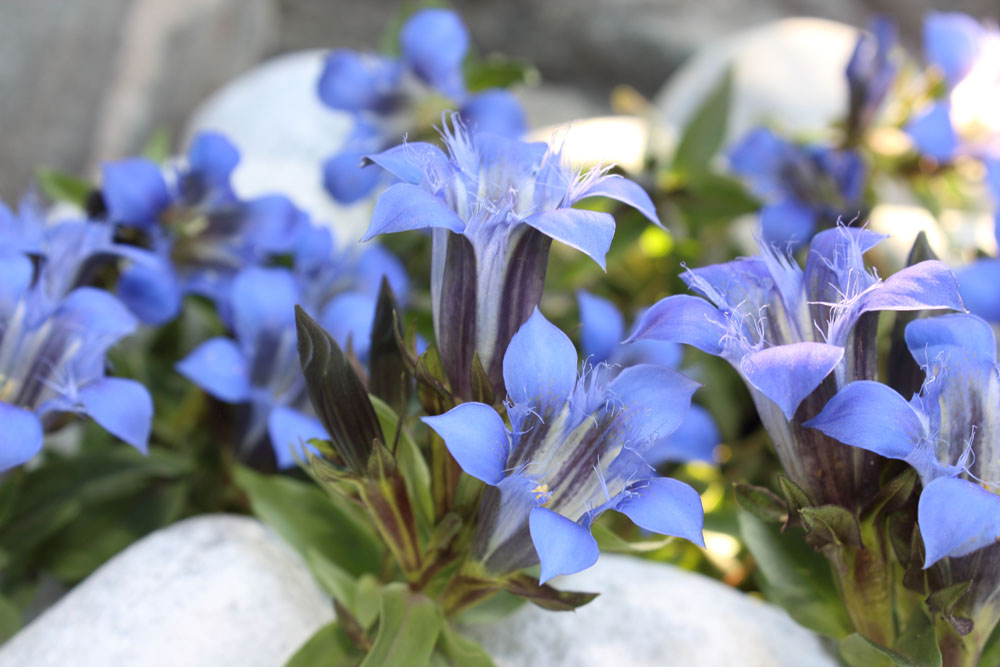Description
Gentiana – Gentian –
There are about 400 species of hardy annuals, biennials, and deciduous, semi evergreen, and evergreen perennials, in this genus. They are widely distributed throughout temperate zones, most occurring in alpine habitats, with some, mainly in North American and Japanese species, in woodland. They bear large, usually trumpet shaped, sometimes bell or almost urn shaped flowers from spring to autumn, mainly in shades of intense blue, but also in white, yellow, or occasionally red. Leaves are simple and held in opposite pairs or whorls, or produced in basal rosettes. Many autumn flowering species have overwintering rosettes and are classed as semi evergreen, the flowered stems die back each year to the rosettes.
Small species, to about 6″ tall, are suitable for a rock garden, more robust species are suitable for borders. Woodland natives, like G. asclepiadea, thrive in partially shaded sites, associating well with ferns and grasses. G. sceptrum is suitable for a bog garden, G. lutea is effective beside water. Autumn flowering Gentians go well with small, late flowering bulbs.
Grow in light, humus rich, reliably moisture retentive, but well drained soil. Autumn flowering species, unless other wised stated, need neutral to acidic soil. Site Gentians in full sun only where summers are cool and damp, in areas with warm, dry summers, provide shade from hot sun.. Divide or root offsets in spring every 3 years.
Prone to rust, asteromella leaf spots, cercospora leaf spots, aphids, spider mites, and slugs and snails.
G. septemfida – Crested Gentian – This spreading herbaceous perennial found from the Caucasus, Turkey, Iran to Central Asia grows 6-8″ tall and 12″ wide. From prostrate to ascending stems it carries paired, oval, pointed, mid green leaves, to 1 ½” long. In late summer it bears terminal clusters of 1-8 narrowly bell shaped, rich blue or purplish blue flowers, 1 ½” long, with white throats and darker stripes.
Zones 6-8





